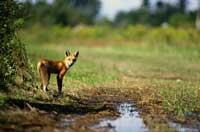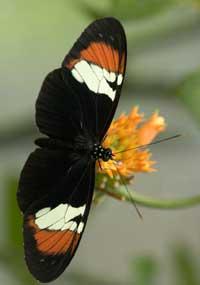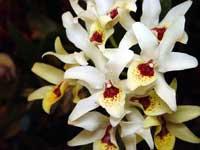The butterfly and evolution go back and advance on the road
2006/08/13 Rementeria Argote, Nagore - Elhuyar Zientziaren Komunikazioa

It is not easy to go back in the evolution of species, since it is not a straight line.
To do this, scientists look back in time, catalog current species, and look for clues of ancient species. In this way, they try to know the relationship between each other (evolutionary link). And the idea behind all this is to take two species of the world, whatever it may be, that they had an ancestor in the bathroom.
This ancestor will be very old if we take very different species, such as the dog or the fly, but if we take similar species like the dog or the wolf, that ancestor will be closer to time.
In general, one species is transformed into another. But there are other forms of evolution. Hybridization, for example. Hybridization gives rise to a new species of two different species. In plants, hybridization is common, not in animals.
Hybrid butterfly

The Heliconius heurippa butterfly has two red and whitish markings on its wings, and is the result of hybridization among two other species: Heliconius cydno, white footprint and Heliconius melpomene, red footprint. (Photo: M. M. Linares )
However, it is possible that hybridization is behind more species than expected. Recently they have seen, for example, that the Heliconius heurippa butterfly arose by hybridization among two other species of butterflies. The truth is that they already suspected, since the remains of that butterfly on their wings are a combination of remains of these two other species. Heliconius heurippa has whitish and reddish remains on the black wings, another of these species, Heliconius cydno, has whitish remains and the other, Heliconius melpomene, reddish.
Therefore, biologists worked with H. heurippa with logical suspicions. But trying was something else. They did genetic tests and saw quite clearly the kinship between the three species of butterflies. But they wanted to go further and see if that hybridization in nature could also occur in the laboratory. They crossed two ancestral species and, after three generations, created a hybrid with the same brands south of the butterfly H. heurippa.
On the other hand, it was observed that the southern remains have a great significance in the reproduction of these butterflies. Males choose females with the same southern footprint (eight or nine in ten). This is fundamental for the separation of the hybrid species from the ancestors, since if crossed with ancestral species the newly created species would be diluted.

In the evolution of plants, hybridization has been more frequent than in animals. This plant, for example, is Cattleya guatemalensis, a hybrid species.
That in the laboratory. In nature they have seen that the hybrid butterfly lives geographically separated from two other species: They live in the jungles of Venezuela and Colombia, but they are hybrids at higher altitude. Therefore, the possibilities of crossing species are scarce and each species follows its own evolutionary path, at least for five hundred thousand years.
As can be seen, scientists go back and advance in the time of study of evolution; if the evolution of the species was a straight line, half wrong, but occasionally the species have crossed creating hybrids. This makes a more complex and also more interesting research.
Published in 7K.




